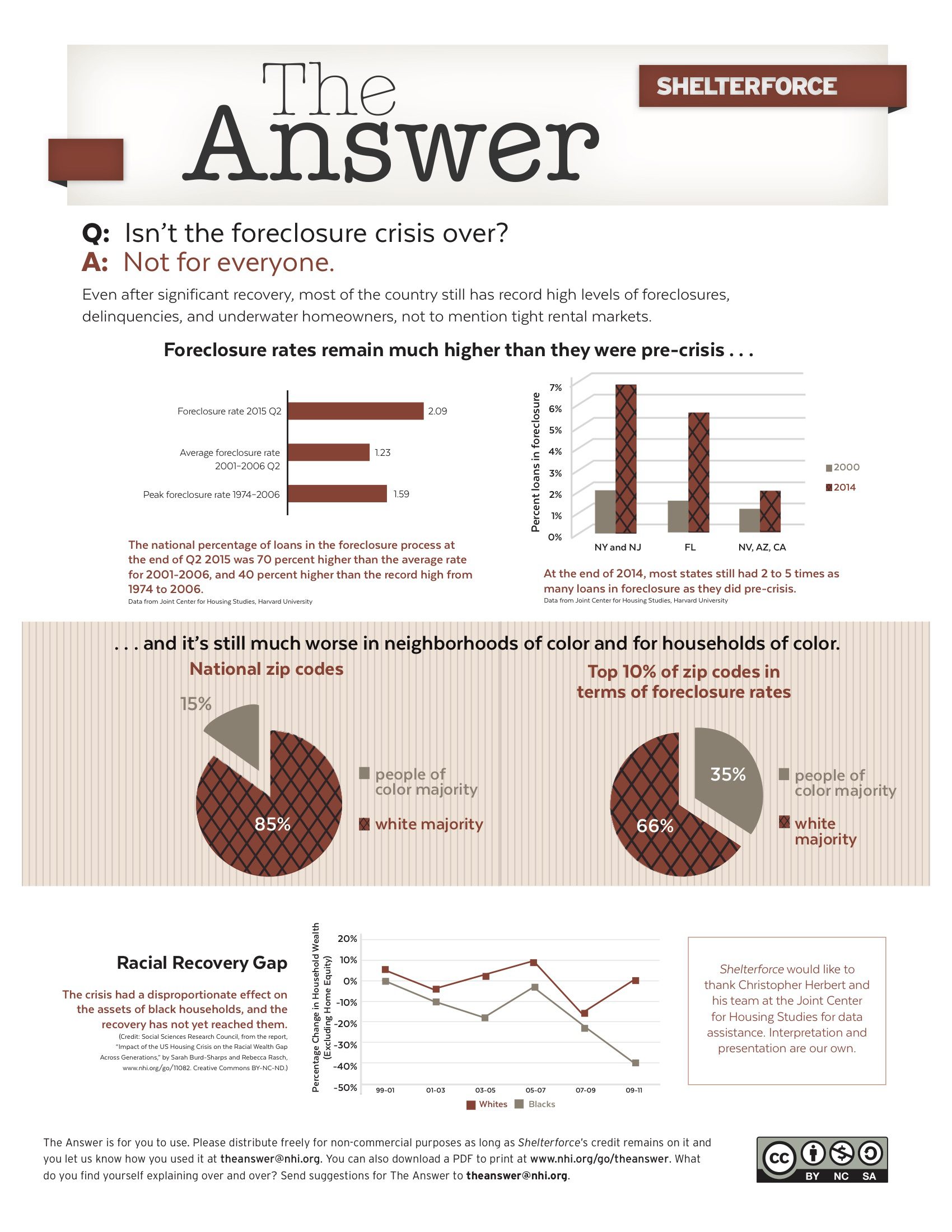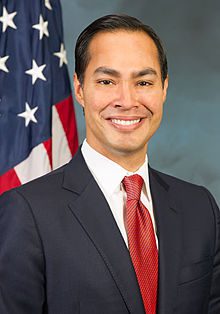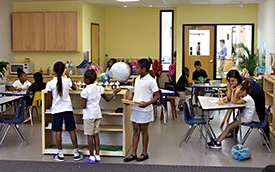
Photo by Mufidah Kassalias, via flickr, CC BY-ND 2.0)
Many community development organizations approach the issue of public education with trepidation. Too many public schools have been entrenched in mediocrity for too long. The politics are messy. Public schools have become everybody’s favorite scapegoat.
And yet, if your organization’s mission is to stabilize and improve struggling communities, it is hard to ignore the effect of public schools on your ability to meet that mission. You may create affordable housing, bring a new grocery store into the neighborhood, organize to reduce crime or increase jobs—and succeed in these efforts only to see families move out as soon as their children reach school age.
Here are three simple questions to guide you in considering whether—and how—to engage with your local public schools.
1. How bad are they, really?
Sometimes our public schools have a reputation that is far from reality. Have you visited during the school day anytime recently? Talked with a variety of parents whose children attend the schools? Test scores may be the easiest data to find, but they don’t tell the whole story. Do some homework and find out what the problems really are, and how they are being addressed. You may be surprised to find some devoted, hardworking educators who welcome new partners.
2. Who are your potential playmates?
Are there education advocacy groups active in your state or local school system? Other community-based organizations or institutions investing in the schools? Research who these groups and individuals are, what their interests and activities are, and what kind of impact they are having. Be aware that there is a dizzying array of national funders and advocacy organizations working on “education reform,” a term that means different things to different people. Many come in with their own agenda, which doesn’t always focus on the best interest of the children. Ask where the voices of those most affected—families and youth—are in their efforts, and particularly those currently being failed by the schools. If these voices are missing, proceed with caution. Or consider being the bridge builder that brings them to the table.
3. How does it affect your ability to meet your mission?
Do families move out of neighborhoods in which your organization works because of poor-quality schools? What role do the schools serve, or might they serve, in meeting your organization’s mission? Local public schools can be anchor institutions—places to hold meetings and community events, sometimes one of few “neutral” locations where different groups can come together and not feel like they are in someone else’s territory. They are often the places where you can find the “hard to reach” families who don’t come out to your meetings or events. Sometimes these families have trusting relationships with one (or more) of their children’s teachers, who can become a bridge for you. If your organization’s mission encompasses anything more than housing production, it is likely that a working relationship with your local public schools has something to offer to help you meet that mission.
It’s true that public schools can feel like impenetrable institutions. It’s also often true that the people who run them want to see them work well for children. You can start small, for example, organizing homework support for struggling students or inviting parents and school staff to work with you on community projects. You don’t necessarily have to take on all of the bigger challenges. At whatever level you engage, the community is likely to be better off for it.





Engage the public schools?
Engage?
Well, you can try.
My own experience in my community outside Atlanta stands as a stark example of how well THAT can work. Our neighborhood elementary school was a disaster area failure factory extraordinaire. But rather than pony up for the very nice Quaker private school down the street, some parents actually did try to “engage.”
They met with the principal and tried to get involved, with ideas for improving education, operations, the works.
They were roundly rebuffed and accused of…
wait for it…
wait for it…
…conspiring to turn it into a white school!
Well, they tried.
They really tried.
Rejected, but still dedicated to getting their kids a decent education, the parents went to Plan B.
This time they succeeded and the area now has a magnificent charter school, completely free of the malign influence of the incompetent principal or the incompetent local school board.
Of course, that does little to help the children still stuck in the original school, which is still there and still operating.
SOOO…. “It’s also often true that the people who run them want to see them work well for children???”
Perhaps.
And perhaps some of them are in need of some rather more vigorous “Engagement,” maybe some harsh housecleaning, before they can offer any hope of being a positive influence on their community and on the lives of the people who grow up there.
Hmm…In response to the first poster, I have to say that if I were the staff that met with you I too would rebuff you. Yes, engaging with schools is hard. It’s probably some of the hardest, most discouraging work you can do. But so is community development. I don’t know of too many communities where engaging city hall, the state assembly or some other city or state administration is a cake-walk. Making sure public institutions are accountable and responsive to the needs of their constituencies is a responsibility we all must bear for a free and just society. So if you are rebuffed, kicked out, ignored–keep going back, be a persistent but magnificent pest to administrators (how about sweeping around the exterior of the building—without being asked), drop off free a free lunch or two to a classroom teacher, or classroom supplies that can shared between a few classrooms. (Donate some clothes washing detergent—did you know some schools have these to help kids who don’t have access to it?) Do whatever you can to build engagement, connection and dialogue, because its too important just to say “it’s too hard.”
I share a similar reaction to the first response the whine of “we did our best to reach out and were turned away for our wonderful intentions and insights”. Engagement is hard work and involves trust and intentional action to learn from local experience especially for the white knights coming in to save the public schools in low/mod income communities of color. Building trust means investing time and effort to hear the voices that have been struggling with poor resources and empty promises. We know that success in the housing/community development sector will mean working with core institutions like public schools to provide a basis for collective action to improve the neighborhood. I have worked with the Providence Children’s Initiative in Providence and saw how we could engage parents and the neighborhood school to address absenteeism due to poor housing and target blighted homes nearby for renewal. I share Pam’s parting words—Do whatever you can to build engagement, connection and dialogue, because its too important just to say “it’s too hard”.
Thank you for the thoughtful elaborations. Yes, there are school administrators that can’t be bothered with “outsiders.” And, as Ray pointed out, there are also outsiders who come in lacking the humility or historical understanding of what a community and its schools have been through. I agree with Pam that you often must start by building relationships. And I would add a dose of empathy and sensitivity to the dynamics of race and class that are ever-present.